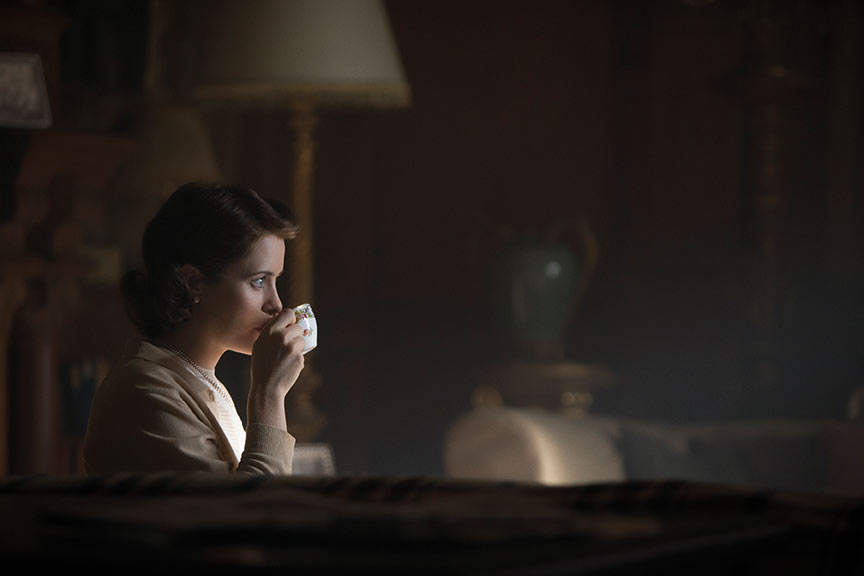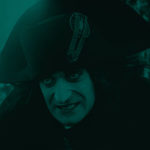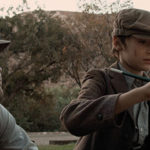
The Sovereign State
Posted on Mar 21, 2017 by Julian Mitchell

Already award winning, Netflix’s huge production, The Crown preserves the highest levels of craft while motoring through the life and times of the first family
The Crown could be seen as a hybrid, somewhere between high-end TV and a feature film. It hasn’t had an air date or a traditional premiere, in fact, Netflix changes episodes after they have gone out to make things better. But the production values are the highest and for season one the look was very different right from the start.
DOP Adriano Goldman knew from the outset what he didn’t want it to look like. “We all agreed to some sort of references that we didn’t want to match to. So we didn’t want to go like Downton Abbey, also we didn’t want to go Hollywood, too Cinderella-like with fake backlights or magic glows – unrealistic lighting designs. My usual approach on nearly every project I do is to make it realistic, so the light should come from real places. I particularly love the colour contrast between tungsten sources and daylight sources in the same frame, and I love to enhance that.
“The challenge for this project was the size of the locations, the size of the windows and the fact that we were mostly working on first and second floors. Every time I wanted my lights to come from outside it was an artistic decision with lots of logistics involved. This is the kind of production that can match the challenge. If I want a cherry picker outside, we’d have to block a street.
“The big lights coming in from the window are 18k arrimax but i’m in love with the softsun lights ”
“I think I step away from realism when I enhance the colour contrast; to the naked eye windows are never that blue and practicals are never that warm. That’s when I think we drift from realism to magic realism or enhanced realism; it’s hard to find a definition for this style.
“Another major challenge was to make the sharp and crispy sensor of the Sony F55 a little more filmic. I think the combination of old Panchro lenses, Glimmerglass filters and haze added a lot to the visual style. The old Panchro lenses were ones that were rehoused by True Lens Services. It’s a mixture of these things, costume and set design – there were never any vivid colours, they were all faded and muted. What type of palette we wanted was all decided in prep; when we go to Africa we can go much warmer. You work very closely with all departments to get the look you want, it’s a combination of everything.”

Camera Testing
Molinare colourist Asa Shoul was very hands on at an early stage of the production and helped in getting the look out of the Sony F55 camera. “We approached it like we were making a series of ten movies. There were four directors across the series and two DOPs. So we treated it as a feature, workflow and set-up wise. We got involved at camera testing stage which is brilliant; although it had to be 4K they still tested the ARRI ALEXA against the Sony F55.
“For features we usually get involved in this way – camera, script, that kind of thing. We also did three or four hair and make-up tests because in our initial look development we were looking at something that was quite desaturated. Also Claire Foy (the actor who plays the Queen) has freckles and make-up was whitening her up a bit to get rid of that, leaving her looking too ghostly. Also the lipstick was going an odd colour so there was quite a lot of back and forth with Adriano Goldman, the DOP, and myself and also costume and make-up to really try and nail it. There’s nothing worse than when the hair, make-up and costume departments do lots of work and for it to not look like that on screen, or for me to try and isolate someone’s lipstick for 500 shots!
“We also talked about aspect ratio and decided on a 2:1 mask so slightly closed in top and bottom to make it more filmic. A lot of the rooms are very tall and we loved the idea of people looking small in a very large space so if we’d gone for a bigger crop or something like 2.39:1 like a movie it would have been wide but not showing them in a large space.
“I used references like House of Cards where I like how naturally lit it looked, not unlit, but if people were away from the window we wanted them to be within the room but in the dark and so you can still see eyes and their expression and emotion. We were very much going away from what I think is a fairly fake period look like Downton Abbey where it’s very bright on an interior. We said that if it’s candlelight or a desk lamp in the corner, that would be the only source of light and would be realistic.
“That’s why I also used some film look-up tables to emulate Kodak print and to just get away from the digital feel or anything too bright or daytime TV! It had to be filmic and classy. We also had a brief look at adding grain but we didn’t in the end. The author Peter Morgan didn’t want any archive footage to look like archive so we did two things, one was a lot of restoration and then we worked to make it look cleaner between it and visual effects. Also whenever there was going to be a piece of archive then they had someone watching it on a TV. Then it would be OK and hidden by a few TV lines. It’s a very nice way of including original footage but not breaking you out of the drama by making you know it’s real.
“The initial thought for the look was the desaturated one from The Queen movie but it didn’t quite work; it was too lifeless. There were times we wanted places like Buckingham Palace, especially when Elizabeth was forced to live there, to feel like this huge, empty, cavernous place and still have that gaudy gold and red without feeling warm and intimate. It had to feel like a massive mausoleum almost. So there were times when we worked with desaturation but we had to be careful because if she looked too ghostly, it could look like a flashback or the audience might feel separated from her. You’ve got to be careful with too strong a look.”
 Princess Elizabeth’s wedding in Westminster Abbey (Ely Cathedral substituted) needed a massive and no-risk light solution. Airstar’s Balloon lights lit 75m of the nave with two 16K HMI tubes and one 8K HMI Ellipse.
Princess Elizabeth’s wedding in Westminster Abbey (Ely Cathedral substituted) needed a massive and no-risk light solution. Airstar’s Balloon lights lit 75m of the nave with two 16K HMI tubes and one 8K HMI Ellipse.
Kodak Print Look
Adriano thought that the prep was fine, but the acid test is when you first step on set. “The first two weeks is always the most important time in this kind of drama because you can talk about style during prep but it’s actually on set that you find out what works. Maybe the trickiest part is working for different directors and making sure the project allows them to come with a bit of personal style while also carrying things forward from the other directors.”
Asa agrees: “Although there were two DOPs and a general look that I had to steer it towards, you have different locations and periods and directors who all want to do something slightly different. It’s definitely a Kodak print look without being forced; there was a general softness with filtration in-camera and always an introduction of smoke. It had to be dark and moody without crushing any shadow detail. I think that’s key to that filmic look. Adriano does like to slightly burn highlights through the windows.
“We’d had a lot of experience at Molinare using the Sony F65 and F55 and have done lots of work to make it look nice and filmic. I had to have a ‘grade-off’ with another company for The Crown work. When the director came to me he said they really didn’t like the F55 as it looked ‘horrible’. I worked on it with my previous experience and it started looking much better – it could have been that we’d had it longer and worked out a strategy with films like Ex Machina.”
Un-lit Look
Some people are saying that The Crown looks like it is unlit. It looks natural. Adriano takes that as a compliment. “The acting really helps as they behave as normal people. It doesn’t look like something posed.
“I knew right away that I wouldn’t be able to use ARRI ALEXA cameras because they cannot provide 4K but I had camera tests that included it so I could compare it with the Sony F55 and the RED DRAGON camera. I wanted to match the soft look so we did practical tests comparing cameras and lenses. I found the old Panchro lenses and the Glimmerglass gave me that soft, gentle look so now I’m enjoying the F55. I knew from the start that I wouldn’t go with modern lenses, and we tested so many different lenses, but ended up with the old Cooke lenses and Panavision.”
 The Crown features a lot of dust, haze or smoke as Adriano wanted to be able to ‘see the air’ and play with another texture.
The Crown features a lot of dust, haze or smoke as Adriano wanted to be able to ‘see the air’ and play with another texture.
The Haze
Smoke or haze is prevalent in many of the interior scenes, but what does this effect give Adriano? “I just want to be able to see the air. The light shafts are not really my starting points; I’m not really crazy about seeing them. Particularly for season one, as it’s right after the Second World War, we wanted the dust. We wanted to deliver a dusty palace – even for the Royal family things should feel a little grittier and less shiny. In a sense that gives a muted air, it gives me another layer and texture to play with. And we do play with it. There isn’t a constant level we stick to; it’s down to the location and how big the room is or how shafty I want it. There were also locations that we weren’t allowed to use haze so we didn’t; we used smoke filters then.
“The F55 is a native 800 ASA camera but sometimes I would change that to 1000 if I thought I was underexposing too much. I was very careful to avoid underexposure, especially when you get away from the windows using my monitors and iris correction. I wasn’t using my light meters. I did for the tests but now I just rely on the false colour and my eyes. Also when I was in any doubt I would call my DIT, John Paxton, right away and give him a take that looked a little too dark for him to check. We actually haven’t had underexposure problems; I do sometimes go a little too far but I can trust myself. I don’t think I would be that bold if I was shooting on film, especially in the low-light situations. You would have to give it a little bit more light so you are not caught out.”

Lighting
“My key light is usually my backlight, so for instance, Claire Foy is never front-lit, she is mostly side-lit but is very diffused; there is always maybe two or three diffusion layers. There are nets on the windows and another layer inside that always comes in for close-ups,” says Adriano. “The big lights coming in through the window are 18K ARRIMAX but I’m in love with the SoftSun lights, the 100K lights from Luminys. It’s a fantastic 100K, dimmable source that you can dim without changing the temperature. With it you end up saving money as you move faster, because some days I have one source outside that gives me the wide interior shots and when I move to mid shots and close-ups I just bring in a net and more diffusion layers, not another head. I love to see the set and there are no lights inside, just diffusion. I am convinced the actors like walking into a set and asking ‘is this it?’ We have marks but they have the freedom to rehearse as they want; it’s more like a play. I need a bit more time for the close-ups though, especially for Claire.”
Asa also saw his role as enhancing what Adriano had already shot and loved the unlit look. “A lot of stuff we get now is front-lit with both eyes all the time; I think people have got very used to that. With The Crown the light was coming from the window and the other side will be in shadow which is much more interesting. With the F55 you’ve got to be very careful with the exposure to make sure you don’t get noise. We did a lot of testing. I wasn’t getting underexposed material where I would have to lift it and put lots of contrast in. The main challenge was the laying down of the smoke and matching between the wide shots and the close-ups. Especially on the ‘smog’ episode I was given a smog plate, which I would mix in and out, and visual effects added some too. But grade-wise there wasn’t any massive windowing or layering; 60-70% of the series I’d only have three or four layers on. It was very straightforward.”
Adriano’s exterior regime was much more simple. “I rarely have lights outside; I really hate faking the sun. If it’s cloudy I may need something for the eyes but it’s just like a pin in the eye or big frames to bounce the lights. Every time we got to a location I would check the direction of the sun and then try and sell the backlight.”
The Crown season two is already being filmed on location in London.








